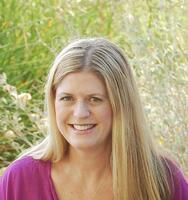
Photo appears courtesy of William Warby. I have a customer using a web-based EDI solution and they are just too big for it. They are currently weighing their options. But it got me thinking, how many organizations are out there using a solution that is really not working for them? Reasons why might include perceived complexity, cost concerns, integration limitations, and lack of technical staff. This article will focus on those four objections to making the move from web-based EDI to on-premise EDI software.
I will start with cost since that is probably the most common reason I hear for not wanting to put in on-premise software. This is where I tell them to think long term. For the sake of comparison, let’s say they are paying $300 per month (under 10 trading partners), they could hypothetically have on-premise software that would pay for itself inside of two years (not including mapping). Meanwhile, they would save valuable time (time = money) not having to rekey everything into their order processing system, have a system that is seamless and automated, which can only help their business in the long term.
Lack of technical staff being a stumbling block to on-premise bliss is a big myth. Most software vendors and resellers also offer professional services so that you do not have to have ANY technical staff whatsoever. When my company sells on-premise software, we give our client the option to have us train them to manage the software and do the mapping or pay us to do it. In the latter, we act as their technical staff and they only need to pay the bill. That being said, if you put that much trust into third party for your EDI management, make sure you get references.
The complexity issue is one that is not so cut and dry. The reality is that you can construct your solution to be a simple POs (EDI 850) in, Invoices (EDI 810) and Ship Notices (EDI 856) out scenario OR you can have multiple systems communicating with each other that include marketing automation (Hubspot, Marketo), webstore (Shopify, Magento) and ERP (SAP, Ross) – in one beautiful streamlined solution that will wow your customers (whether you are B2B or B2C) and competitors alike. The key is finding the right tools and the right architects to help you build a solution that will help you meet your business goals. The bottom line is complex does not necessarily mean difficult.
The last misconception is not so much of a misconception as it is a hurdle. There are certain accounting systems (the kind you can buy in a box at Costco) that are just not integration friendly. By “integration friendly,” I mean there is no clear file format accessible to bring data and out of your system such as XML or flat file to integrate with a powerful package such as Laison’s Delta/ECS. Some of these turnkey accounting software packages do have relationships with EDI solutions providers for integration options, but you are left with very little options. Don’t back yourself into a corner. If you already have, like many before you, at some point you will need to invest in a real ERP system. This will open up your world to countless possibilities when it comes to data integration.
As you can see, having on-premise integrated software does not have to be a pipe dream. The right tools, the right help, and the right mindset can make that dream into reality. Gone are the 6 figure integration packages of 20 years ago. Today, on-premise integration software is accessible to even the small-to-medium (SMB) business. Even if you don’t want to host it in your facility due to hardware requirements, etc., you can always install your licensed software on servers in the Cloud through channels such as Amazon’s Web Services or Rackspace. There are so many different ways of achieving data integration greatness in today’s market, there are really no more excuses why anyone should be excluded.
Learn more about the relationship between ERP providers and EDI partnerships in our free whitepaper: EDI Partnerships Deliver Value to ERP Solutions Providers








